The Serpentine Pavilion 2025, titled A Capsule in Time, opens to the public on June 6, 2025, at Serpentine South in Kensington Gardens, London. Designed by acclaimed Bangladeshi architect and educator Marina Tabassum and her firm Marina Tabassum Architects (MTA), this year’s pavilion is a spatial narrative on memory, impermanence, climate resilience, and cultural continuity.
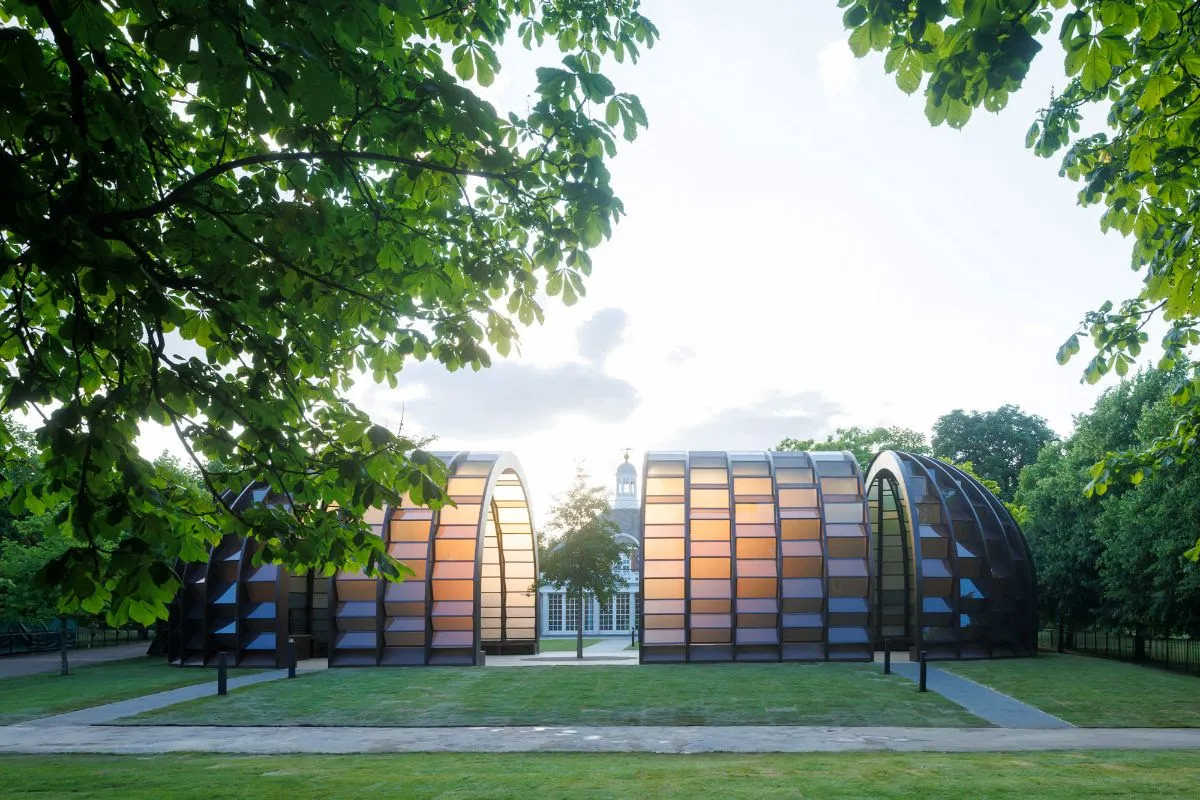
A Design Rooted in Temporality and Transformation
The Serpentine Pavilion celebrates a milestone this year: its 25th commission since Dame Zaha Hadid inaugurated the program in 2000. The late architect’s ethos, “There should be no end to experimentation,” is the spirit that continues to drive the annual project. Tabassum’s contribution exemplifies this commitment to pushing the boundaries of architectural form and thought.
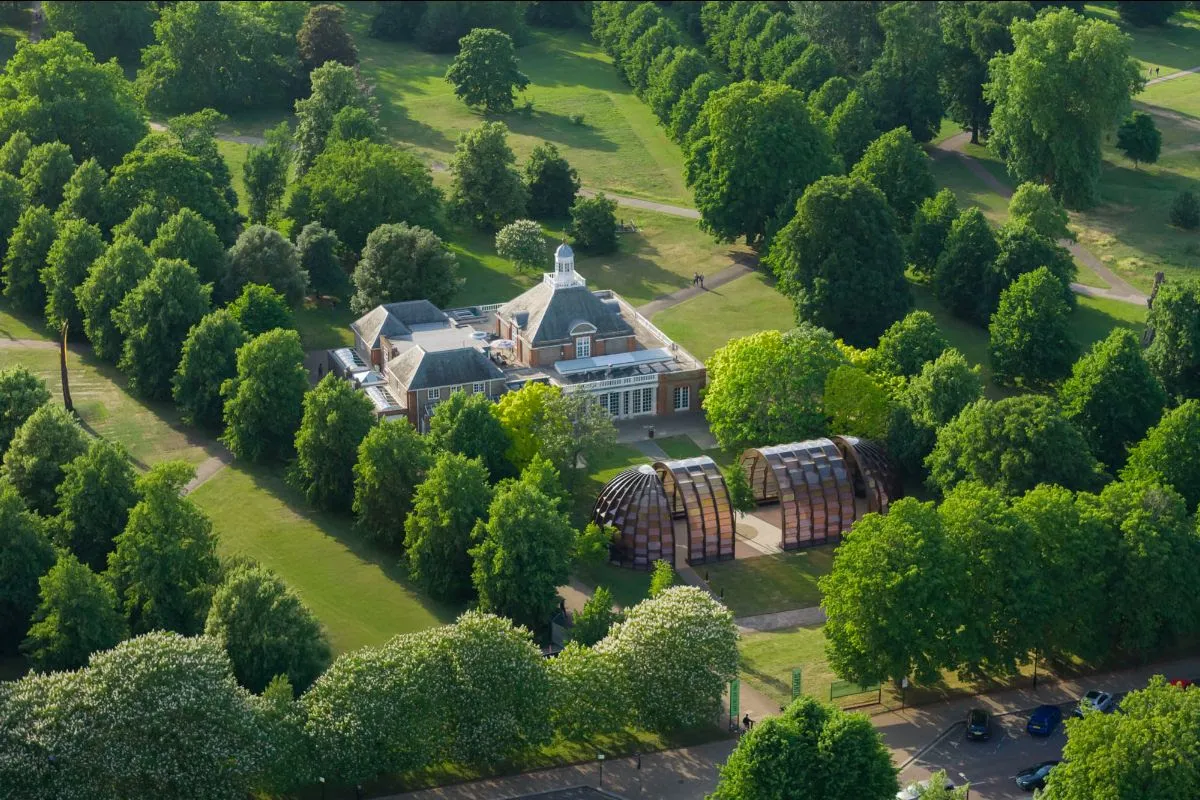
Supported by Goldman Sachs for the 11th year in a row, the Serpentine Pavilion program offers a high-profile platform for some of the most forward-thinking architects worldwide. For Marina Tabassum, this invitation is a recognition of her unique voice, one that blends architectural precision with cultural sensitivity, environmental awareness, and community engagement.
Tabassum’s pavilion stretches along a north-south axis, with its central courtyard aligned perfectly with the bell tower of Serpentine South. The structure consists of four wooden capsules that serve as semi-enclosed spaces, their sculptural forms evoking arched garden canopies. Translucent facades soften and filter daylight into the interior, casting dappled shadows reminiscent of light filtered through tree foliage. This play of light and shadow forms one of the sensory signatures of the space.
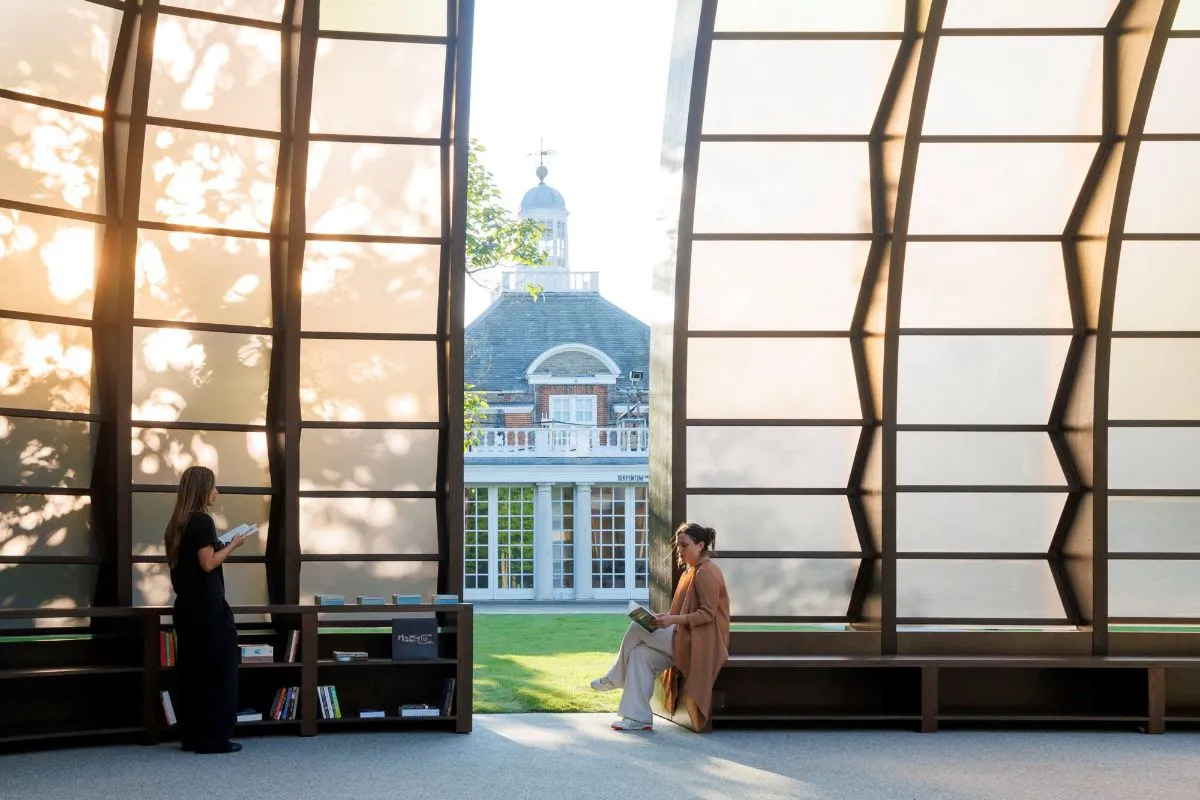
Crucially, A Capsule in Time is Tabassum’s first structure built entirely from wood. The use of timber is a conscious decision, both material and symbolic; it’s sustainable, tactile, and biodegradable, and it enhances the design’s connection to natural rhythms. One of the four capsules is designed to move, a kinetic feature that can alter the pavilion’s spatial configuration. This shiftability reinforces the idea of architecture as dynamic, responsive, and alive, never fixed.
A Tree at the Heart of the Structure
Perhaps the most poetic element of the pavilion is what grows at its center: a semi-mature Ginkgo tree. Known for its resilience and ancient lineage dating back to the Jurassic era, the Ginkgo serves both as a natural anchor and a metaphor for continuity through change. The leaves, bright green in early summer, will transition to luminous gold by autumn, offering a living marker of time’s passage throughout the pavilion’s four-month lifespan.
Ginkgos are climate-resilient, disease-tolerant, and increasingly important in the urban treescape as London faces shifting weather patterns and environmental pressures. After the pavilion’s deinstallation in October, the Ginkgo will be replanted in Kensington Gardens, ensuring the project leaves a lasting ecological legacy.
A Place of Gathering, Learning, and Reflection
Beyond its form and materials, A Capsule in Time carries an ambitious social and cultural dimension. In a world where free thought and open discourse are under threat in many regions, Tabassum envisions the pavilion as a sanctuary for dialogue. Built-in bookshelves within the capsules hold a curated collection of books spanning Bengali literature, poetry, philosophy, ecology, and social history. These texts reflect Bangladesh’s deep cultural heritage and underscore the importance of knowledge-sharing in public space.

Architect Marina Tabassum, founder of Marina Tabassum Architects (MTA), described the 2025 Serpentine Pavilion as a celebration of London’s summer, an opportunity for people to gather outdoors with friends and family in Kensington Gardens. She shared that the design was inspired by the tradition of park-going and by personal memories of sitting under a *Shamiyana* at Bengali weddings. These canopies, often made from bamboo and decorated cloth, are used for bringing large groups of people together in joyful settings.
Tabassum explained that the pavilion’s translucent structure allows light to filter in gently, much like sunlight through a Shamiyana, creating a calm and welcoming space. It’s meant to be a place that encourages understanding and shared experiences, something the world needs more of. Through this design, she hopes to spark conversations about diversity, unity, and the human need to come together.
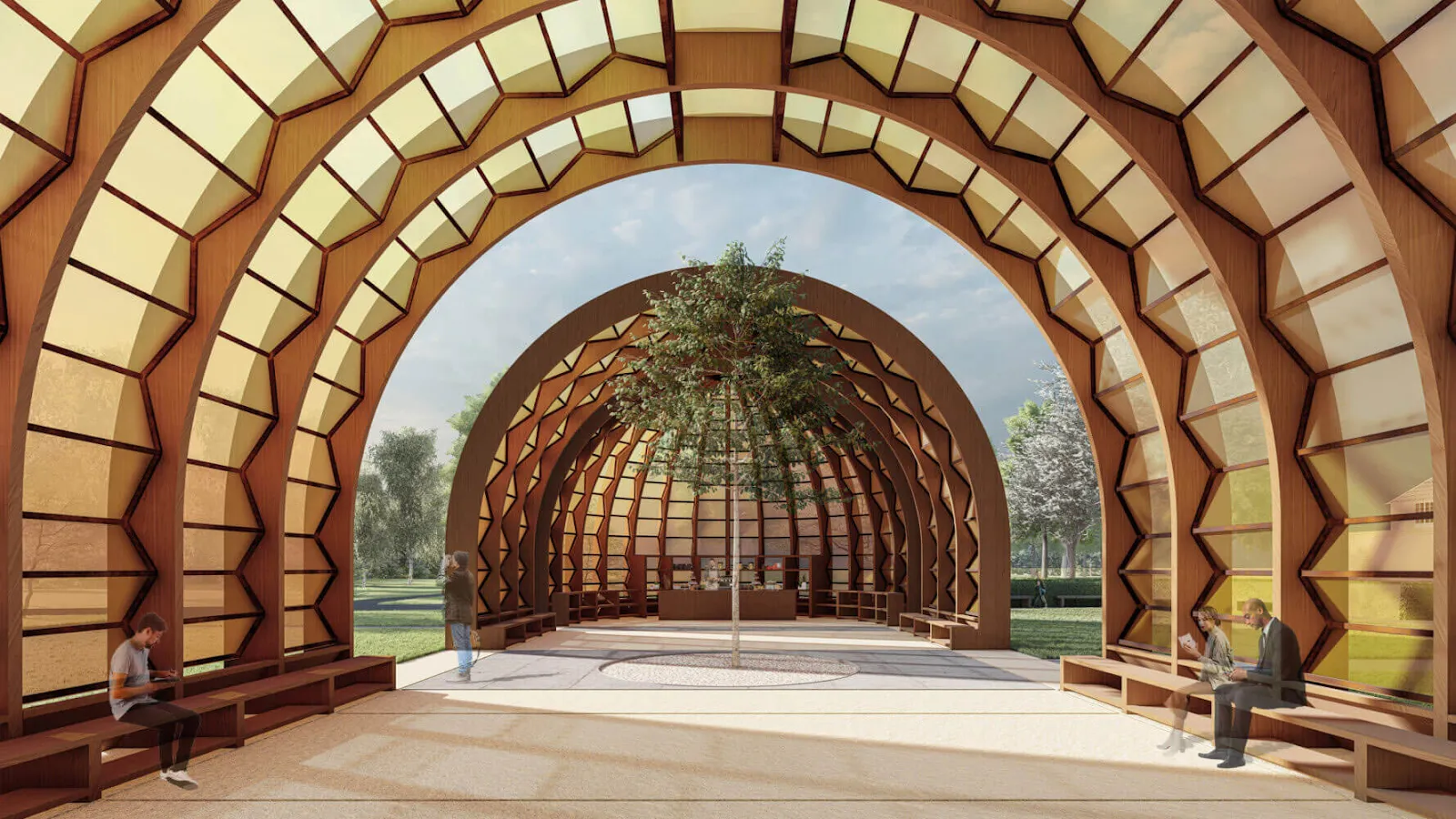
In her 2025 Serpentine Pavilion, all these themes coalesce in a structure that’s both physically grounded and philosophically expansive.
Visitors will find quiet corners to sit, contemplate, read, and connect. The wooden forms echo both traditional Bangladeshi architecture and universal archetypes of shelter, creating a design language that is both specific and broadly resonant.
Visit and Experience
A Capsule in Time will be open to the public from June 6 to October 26, 2025, at Serpentine South, Kensington Gardens. A press preview and photocall are scheduled for Tuesday, June 3, with speeches at 10 a.m. and media access beginning at 8:30 a.m.
It asks visitors to slow down, reflect, and consider architecture’s power to hold memory, community, and hope, especially in a time of global volatility and environmental uncertainty. In A Capsule in Time, Marina Tabassum designs a breathing, changing, light-filled vessel for ideas.
Images courtesy Marina Tabassum Architects (MTA), Iwan Baan, Serpentine.














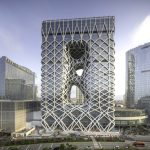









Leave a comment